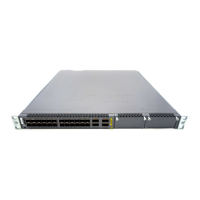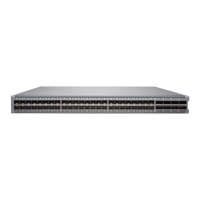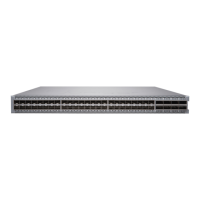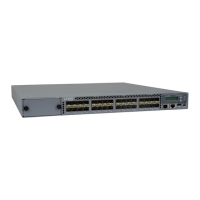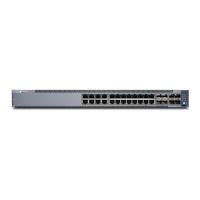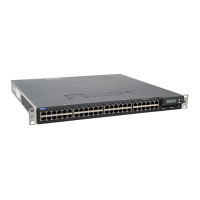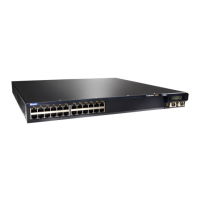•
The cable with very high resistance (indicating an open circuit) to chassis ground
is negative (–) and will be installed on the V– (input) DC power input terminal.
CAUTION: You must ensure that power connections maintain the proper
polarity. The power source cables might be labeled (+) and (–) to indicate
their polarity. There is no standard color coding for DC power cables. The
color coding used by the external DC power source at your site determines
the color coding for the leads on the power cables that attach to the DC
power input terminals on each power supply.
3. Ensure that the input circuit breaker is open so that the voltage across the DC power
source cable leads is 0 V and that the cable leads do not become active while you
are connecting DC power.
NOTE: The V+ terminals are referred to as +RTN, and V– terminals are
referred to as –48 V in “DC Power Wiring Sequence Warning” on page 130
and “DC Power Electrical Safety Guidelines” on page 125.
4. Ensure that the power supplies are fully inserted in the chassis.
5. Remove the terminal block cover. The terminal block cover is a piece of clear plastic
that snaps into place over the terminal block (see Figure 23 on page 152).
6. Remove the screws on the terminals using the screwdriver. Save the screws.
WARNING: Ensure that the power cables do not block access to device
components or drape where people can trip on them.
7. Connect each power supply to the power sources. Secure power source cables to the
power supplies by screwing the ring lugs attached to the cables to the appropriate
terminals by using the screw from the terminals (see Figure 23 on page 152 and
Figure 24 on page 153 ).
CAUTION: The DC power supply has four terminals labeled V+, V+, V–,
and V– for connecting DC power source cables labeled positive (+) and
negative (–). The V+ terminals are shunted internally together, as are the
V- terminals. The same polarity terminal can be wired together from the
same source to provide an additional current path in a higher power
chassis. Do not connect the terminals to different sources. For example,
connect –48 V from DC source feed A to the input terminals of one power
supply and connect–48 V from feedB tothe input terminalsof the second
151Copyright © 2014, Juniper Networks, Inc.
Chapter 17: Connecting the EX4600 Device
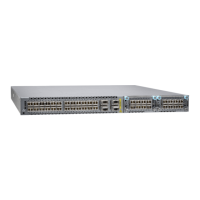
